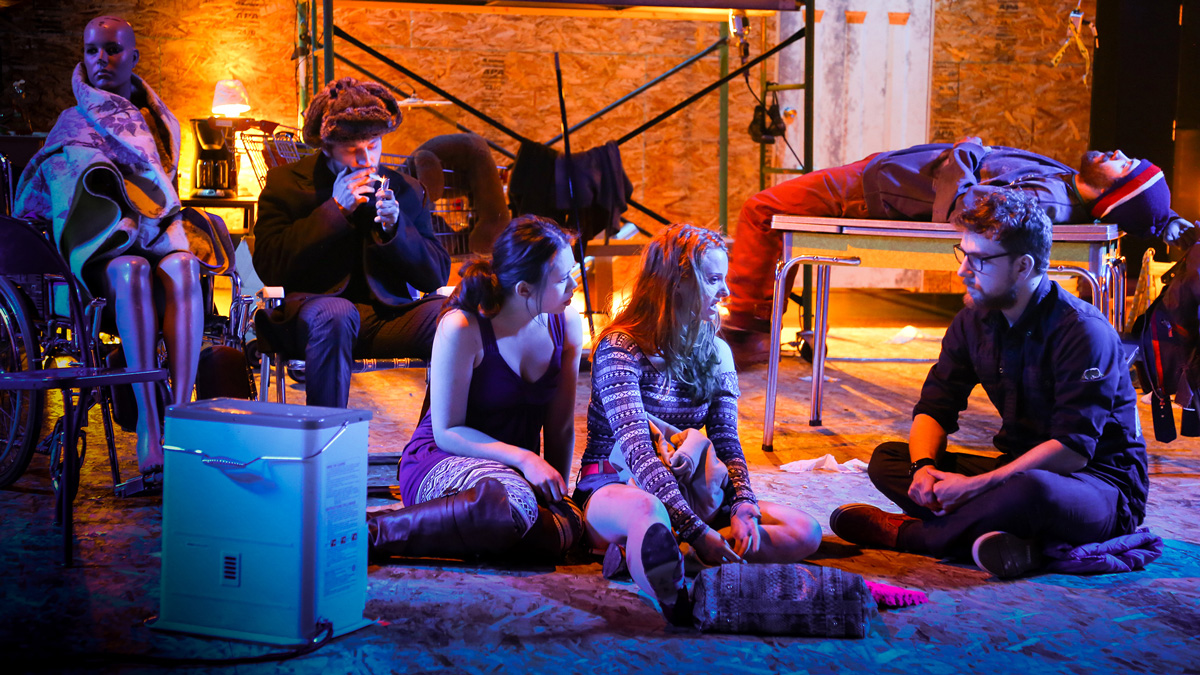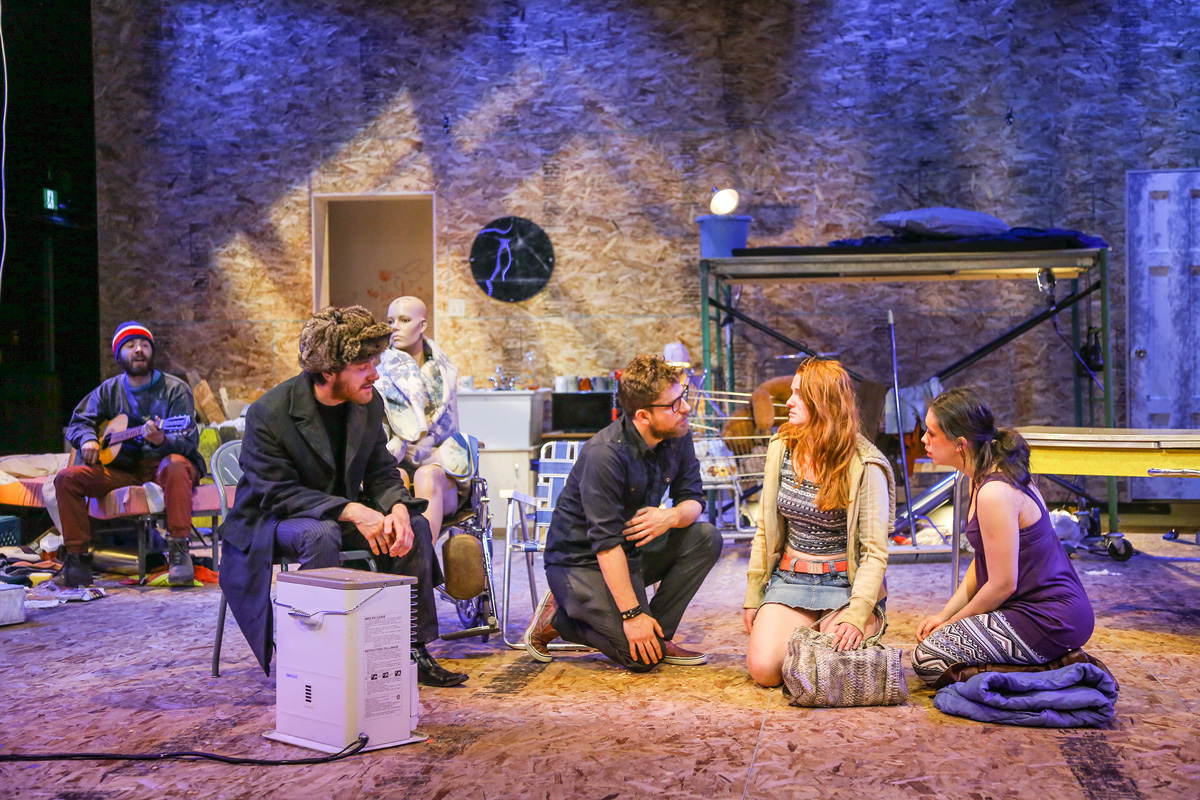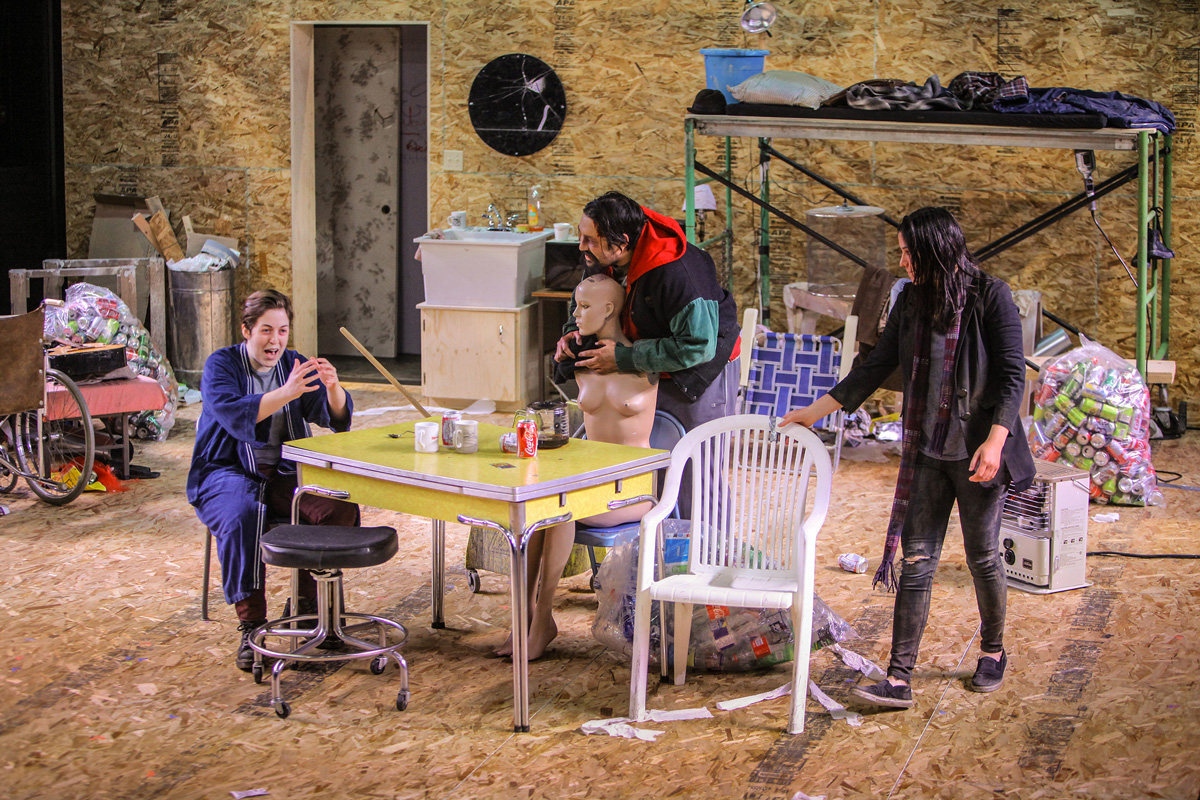UAlberta’s ‘The Lower Depths’ peeks behind the curtain of mainstream society
 Ed Ellis
Ed EllisLeft in silence, the audience tensely gawks at the dark figures strewn haphazardly around the set. A box of scraps is in one corner; a space heater here, a broken mirror there, and sleeping bodies everywhere. What breaks the silence is a harsh wheezing — a ragged coughing that pains us, the audience, to listen to. Gradually, the bodies wake up. One person desperately rushes to inject opioids while another begs the others to be quiet so that he can sleep.

The tone of the play is immediately revealed in this cramped set. Maxim Gorky’s The Lower Depths, adapted by David Kennedy and wonderfully brought to life by the U of A’s deeply talented drama students, is a dark, dire look into a life of poverty. The play, originally presented in 1902, and now adapted to bring the production into the modern age, focuses on a group of 12 characters living together in a shelter. Much of the viewer’s enjoyment comes from watching these characters develop and interact with each other. This excellent characterization is a commendable feat from both Gorky and Kennedy. Every character has their own set of problems ranging from addiction and alcoholism to debt. Going deeper, the play also delves into questions of existentialism, the role of altruism, and how one can maintain a sense of identity in a dehumanizing and harsh environment. But it’s not all gloom. The play has a wonderful sense of humor, often coming from the brilliant delivery of Alex Cherovsky, who plays the character of Satine.
The play is filled with captivating performances. There’s not a single weak link apart from a couple awkward line deliveries. It’s difficult to single out a performance to compliment, but there was constant surprise with the performances from Gabby Bernard, who plays the character of Vassa, and Matt Mihilewicz’s Andrei. Bernard’s range as she soars from untempered rage to trembling fear and Mihilewicz’s more contained and quiet performance was often impressive.

The set design is rightfully erratic and incongruous; it’s strewn with thrown away furniture, insufficient bedding material, and bags of cans. Each prop gives life to the world of the play and the same can be said for the excellent costume design. By looking at each costume, viewers can imagine each character’s history and identity before any line of dialogue.
Although this rendition is a student production, it shows rarely. On the contrary, the performances are magnificent, and the design and lighting teams are equally talented. After viewers leave, it’s like they’ve taken a peek behind the curtain of conventional, mainstream society and what’s revealed is dark, pitiful, and foreign. The audience members not only feel an appreciation for U of A’s talented students, but are also left humbled with a deep sense of compassion and gratitude for what they have.




